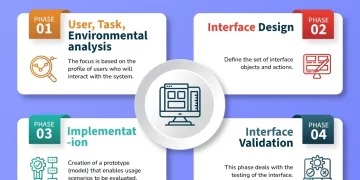The ability to spot the next big opportunity in your market is the hallmark of a successful entrepreneur, investor, or business leader. The world is constantly evolving, and with rapid technological advancements, shifting consumer behaviors, and unforeseen global events, new opportunities emerge faster than ever before. But how do you recognize the right one? How do you know which market trend will lead to the next big breakthrough?
In this article, we will explore the methods and strategies that successful individuals and companies use to identify market opportunities before they become mainstream. From understanding consumer psychology to leveraging technological innovation, we’ll break down the key elements that can help you spot the next big thing in your industry.
1. Understand the Core of Your Market
Before you can spot the next big opportunity, you need to have a deep understanding of the current state of your market. This doesn’t just mean knowing your competitors and understanding consumer behavior—it’s about diving into the core of your industry, knowing where the pain points are, and recognizing where there is room for innovation.
Market Research is Key
Start with comprehensive market research. Gather data, not just from your competitors, but also from customers, suppliers, and even indirect players in your field. The goal is to identify gaps in the current offerings.

For example, let’s say you’re in the healthcare industry. You may notice a growing trend toward telemedicine, but traditional healthcare providers are still hesitant to adopt new technologies. This could present an opportunity to build a platform that bridges this gap, offering seamless integration between healthcare providers and telehealth solutions.
Industry Trends and Insights
Stay updated on macro trends that could impact your market. Global economic shifts, environmental concerns, or emerging social behaviors can often signal the next big shift in your industry. By keeping your finger on the pulse of these larger forces, you can anticipate new opportunities before they materialize in the mainstream.
2. Listen to Your Customers
One of the most reliable sources of market opportunity lies directly in your customers’ feedback. What are they struggling with? What do they wish your product or service could do? Sometimes, the answer is right in front of you.
Customer Feedback and Surveys
Surveys, online reviews, and direct customer feedback provide invaluable insights into what consumers want, what they love, and what they wish could be better. This type of feedback helps you uncover areas for improvement and spot new opportunities for product development.
For instance, if you’re in the food industry, you might notice an increase in customer requests for healthier, organic alternatives to your existing products. Recognizing this shift could be your opportunity to create a new product line that caters to these needs.
Social Listening
In the age of social media, understanding what customers are talking about is easier than ever. Platforms like Twitter, Reddit, Instagram, and TikTok can offer a treasure trove of insights into consumer preferences and frustrations. Pay attention to trending hashtags, discussions, and viral content that could reveal unmet needs in the market.
3. Leverage Technology for Innovation
Technology is arguably the most significant driver of new opportunities in today’s market. From artificial intelligence (AI) and blockchain to automation and the Internet of Things (IoT), new technologies continuously open up new avenues for business innovation.
Adapting Emerging Technologies
The early adoption of emerging technologies can give your business a significant edge. For example, AI-driven tools are revolutionizing industries such as healthcare, finance, and customer service. Companies that can harness the power of these tools are often able to streamline operations, improve customer experiences, and create entirely new business models.
Imagine a traditional retail store adopting AI-powered predictive analytics to optimize inventory management. This could reduce waste, lower costs, and improve customer satisfaction by ensuring the right products are always available when needed.
Automation and Efficiency
Automation has become a buzzword across industries, but it’s not just a trend—it’s a necessity. Companies that embrace automation, whether it’s in manufacturing, marketing, or customer service, can improve their efficiency, reduce errors, and enhance customer experiences.
The growing demand for automation solutions, particularly for small and medium-sized businesses, is an area ripe for new opportunities. Developing software or services that cater to this demand could place you at the forefront of this wave.
4. Evaluate Shifts in Consumer Behavior
Consumer behavior is constantly evolving. As cultural, social, and economic factors shift, so do the preferences and habits of consumers. Identifying these shifts can unlock incredible business potential.
The Rise of Ethical Consumerism
One significant shift in consumer behavior in recent years is the growing demand for sustainability and ethical business practices. Consumers are increasingly concerned about the environmental and social impact of their purchases. This has led to a boom in eco-friendly products, fair-trade goods, and brands with a strong commitment to corporate social responsibility (CSR).
If your business is not already aligned with these trends, it’s time to start thinking about how you can incorporate sustainability into your product or service offering. Whether it’s sourcing materials responsibly or offering eco-friendly alternatives, this could be a big opportunity to tap into a growing market of conscientious consumers.
The Subscription Economy
Another key shift in consumer behavior is the increasing popularity of subscription-based services. Whether it’s streaming platforms, meal kits, or curated fashion boxes, consumers are gravitating toward services that offer convenience, customization, and flexibility.
For businesses, this model offers predictable revenue streams and opportunities for customer loyalty. If you can think of a way to turn your existing product or service into a subscription model, you could unlock new growth potential.
5. Analyze Your Competitors—and Look for Gaps

While being aware of your competitors is essential, it’s also important to step back and look for gaps in their offerings. Are they missing a key service or feature that customers want? Is there a particular niche they’ve overlooked that could be profitable?
Competitive Benchmarking
Performing competitive benchmarking can help you identify where your competitors are succeeding and where they’re falling short. This can inform your strategy, allowing you to capitalize on their weaknesses. For example, if all your competitors are focusing on premium, high-end products, you might find an opportunity in catering to a more budget-conscious demographic.
Collaborative Competitor Relationships
Another approach is to find ways to collaborate with competitors. In some industries, collaboration can unlock growth opportunities that would be difficult to achieve alone. Shared resources, joint ventures, or even co-marketing initiatives can help you capture more market share without reinventing the wheel.
6. Embrace a Culture of Innovation
Innovation isn’t just about creating new products or services—it’s about fostering an environment where creative thinking and problem-solving are encouraged. A culture of innovation can help your team continually spot new opportunities and stay ahead of the curve.
Internal Idea Incubators
Some of the world’s leading companies have internal incubators where employees can pitch new business ideas and collaborate on innovations outside of their day-to-day roles. These incubators create a space for entrepreneurial thinking and allow companies to tap into fresh ideas from within.
Invest in Research and Development
Even if you don’t have an internal innovation lab, investing in research and development (R&D) can set the stage for discovering new opportunities. R&D enables businesses to stay on the cutting edge of trends, technologies, and consumer preferences. With a dedicated team focused on innovation, you’re more likely to spot the next big opportunity before others do.
Conclusion: The Opportunity is Out There—Are You Ready?
Spotting the next big opportunity in your market isn’t about waiting for a sudden stroke of luck—it’s about actively searching for ways to solve problems, improve customer experiences, and embrace new technologies and trends. By staying informed, listening to your customers, and fostering a culture of innovation, you can identify the untapped potential in your industry.
The market will always evolve, and so should your ability to recognize and act on emerging opportunities. If you’re proactive, agile, and always looking for new ways to provide value, the next big opportunity could be just around the corner.

















































